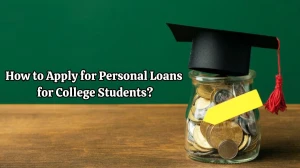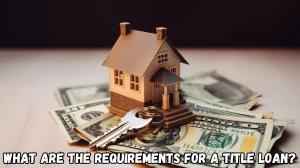
Who Qualifies For Student Loan Debt Relief?
Qualification for student loan debt relief depends on factors like income, repayment plans, and specific programs, with varying income requirements and minimum payment conditions.
Updated Nov 07, 2023
On This Page
- Who Qualifies for Student Loan Debt Relief?
- Extension of Student Loan Repayment Suspension
- What Happened to Biden’s Student Loan Forgiveness Program?
- How to Find Out If You Qualify for Student Loan Forgiveness?
- What Happens If You’re Qualified for Forgiveness?
- What’s the Future of Student Loan Forgiveness?
- How is Student Loan Forgiveness Taxed?
Who Qualifies for Student Loan Debt Relief?
Qualification for the Biden Administration's student loan forgiveness depends on several factors. Borrowers with federal direct loans or federal family education loans who have been on specific repayment plans, like Income-Contingent Repayment (ICR), and have completed either 20 or 25 years of qualifying monthly payments may be eligible for forgiveness, depending on the loan type and plan. ICR is the oldest plan, established in 1994.
Other repayment plans like Income-Based Repayment (IBR), Pay-As-You-Earn (PAYE), and Revised Pay-As-You-Earn (REPAYE) have different forgiveness timelines. Pell Grant recipients may receive up to $20,000 in debt relief, while non-Pell Grant recipients may receive up to $10,000 in relief if their income falls below certain thresholds. Individuals with incomes below $125,000 or households with incomes below $250,000 may qualify for one-time student loan debt relief.
Additionally, those working in nonprofits, the military, or government positions (federal, state, Tribal, or local) may be eligible for complete student loan forgiveness through the Public Service Loan Forgiveness (PSLF) program, subject to specific criteria. Additionally, those employed by nonprofits, the military, or government entities may be eligible for complete student loan forgiveness through the Public Service Loan Forgiveness (PSLF) program, subject to specific requirements and eligibility criteria.
Extension of Student Loan Repayment Suspension
In response to the economic difficulties caused by the pandemic, the Biden-Harris Administration has extended the suspension of student loan repayments multiple times. As a result, individuals with federally held loans have not been required to make any loan payments since President Biden's inauguration.
The one-time student debt relief plan from the Biden-Harris Administration is aimed at addressing the financial hardships brought about by the pandemic. It seeks to assist borrowers in transitioning smoothly back into loan repayments and providing support to those at the highest risk of falling behind or defaulting once payments resume.
A recent law passed by Congress prohibits further extensions of the repayment suspension. Student loan interest is set to resume on September 1, 2023, with payments due to start in October. Borrowers will receive advance notice before payments recommence.
What Happened to Biden’s Student Loan Forgiveness Program?
The student loan forgiveness program proposed by President Biden, which aimed to provide one-time debt relief, was rejected by the Supreme Court. This program would have allowed borrowers with incomes under $125,000 (or $250,000 for married couples) to qualify for forgiveness of up to $10,000 on federal loans.
Those who received Pell Grants for their education expenses could have been eligible for up to $20,000 in loan forgiveness. However, due to the Supreme Court's decision, the Department of Education is now unable to forgive federal loans under this program.
At MarketsHost, we unravel the complexities of Loans, equipping you with the knowledge and tools needed to navigate the financial world with confidence.
How to Find Out If You Qualify for Student Loan Forgiveness?
The Department of Education has begun notifying eligible borrowers, and they don't need to take any action. These notifications are for borrowers who have reached the required number of qualifying payments (240 or 300, depending on their loan type and repayment plan).
The Department will continue these notifications every two months. By next year, they will have updated payment counts for all borrowers. If you have an income-driven repayment plan, you can then check with your loan servicer to see how many qualifying payments you've made.
What Happens If You’re Qualified for Forgiveness?
If you qualify for forgiveness, loan discharges will start about 30 days after you receive an email confirming your eligibility. During this process, your loan repayment will be temporarily paused. Your loan servicer will inform you once your student loan debt is officially discharged.
If you decide not to proceed with the discharge, you'll resume loan repayment when it restarts, with interest resuming on September 1, and payments becoming due in October.
What’s the Future of Student Loan Forgiveness?
The future of student loan forgiveness is uncertain after the Supreme Court blocked the Biden administration's widespread debt relief plan. Currently, the administration and the Department of Education are working on new ways to make student loan payments more affordable when repayment resumes.
They are introducing a new income-driven replacement plan called the SAVE plan, set to replace the REPAYE plan in the summer of 2024. The SAVE plan aims to reduce undergraduate loan payments, prevent loan balances from growing as long as required payments are met, and protect more of a borrower's income for basic needs. Under this plan, borrowers earning less than $15 an hour may not have to make any payments.
Borrowers on a REPAYE plan will be automatically enrolled in the SAVE plan, with applications for the new plan opening later in the summer of 2023. Federal student loan repayment is set to resume in 2023, with interest accrual beginning on September 1 and payments due in October.
How is Student Loan Forgiveness Taxed?
Student loan forgiveness is not taxed at the federal level until at least 2025, thanks to the American Rescue Plan Act. After that, the tax treatment of loan forgiveness depends on the specific program:
- PSLF (Public Service Loan Forgiveness): Loans forgiven under PSLF are not counted as taxable income.
- Teacher Loan Forgiveness: Previously, forgiven balances through this program were taxed as income. However, for loans forgiven on or after January 1, 2021, they are exempt from federal income taxes.
- IDR (Income-Driven Repayment) discharge: Loan balances forgiven under IDR plans are subject to federal income taxes.
Who Qualifies For Student Loan Debt Relief - FAQs
1. Who qualifies for student loan debt relief?
Eligibility for debt relief depends on factors like income, repayment plans, and specific programs.
2. What is the income requirement for loan forgiveness?
Income requirements vary by program, but lower income often increases eligibility.
3. Can private student loans be forgiven?
Generally, private student loans do not qualify for federal forgiveness programs.
4. Is there a minimum number of payments required for forgiveness?
Yes, most forgiveness programs require either 20 or 25 years of qualifying monthly payments may be eligible for forgiveness.
5. What happens if I don't qualify for forgiveness?
If you don't qualify, you may need to continue making loan payments or explore other repayment options.




